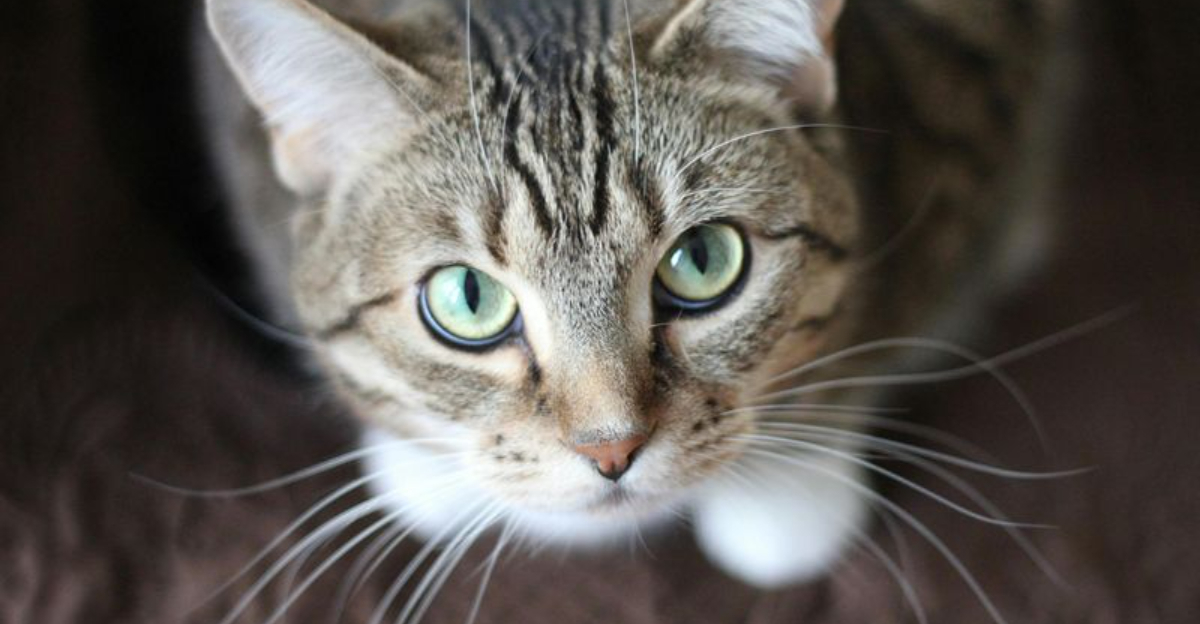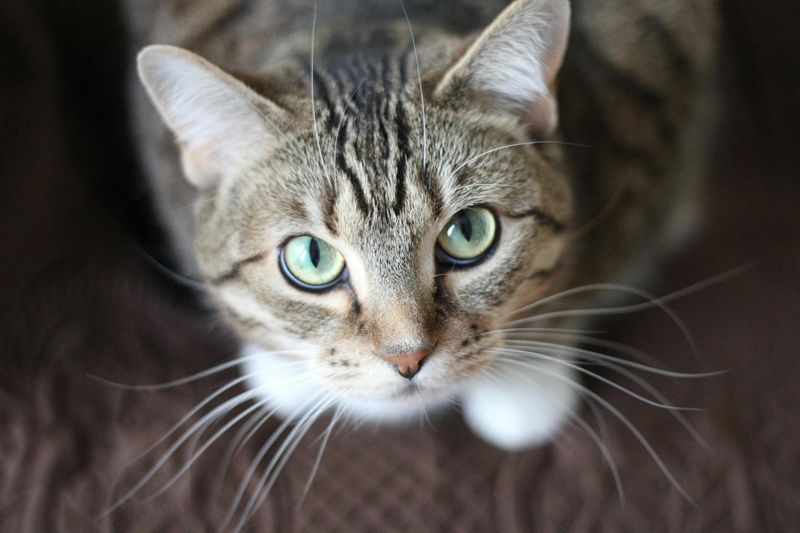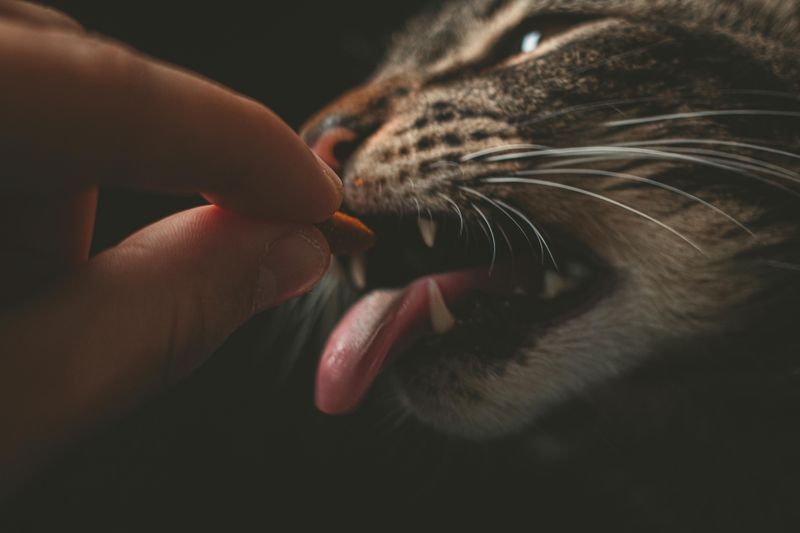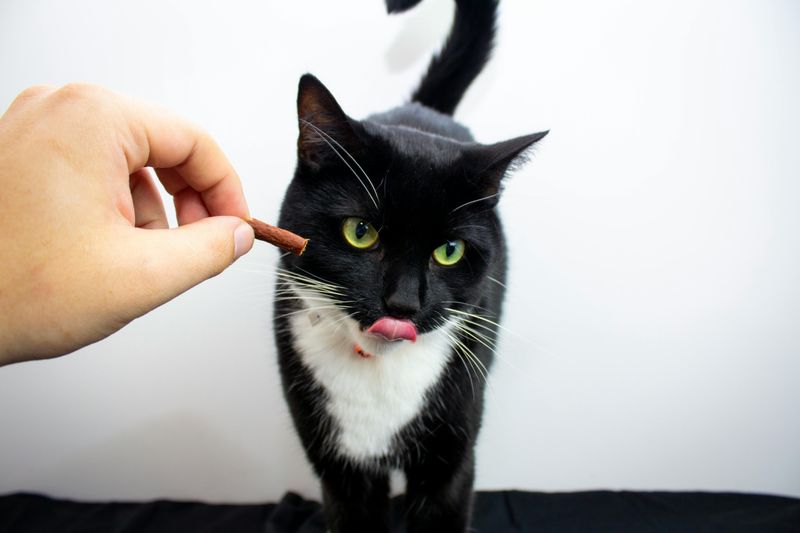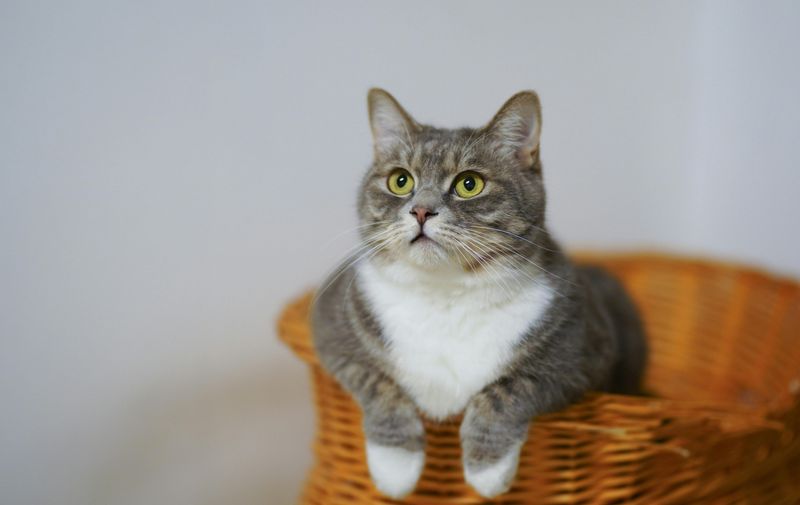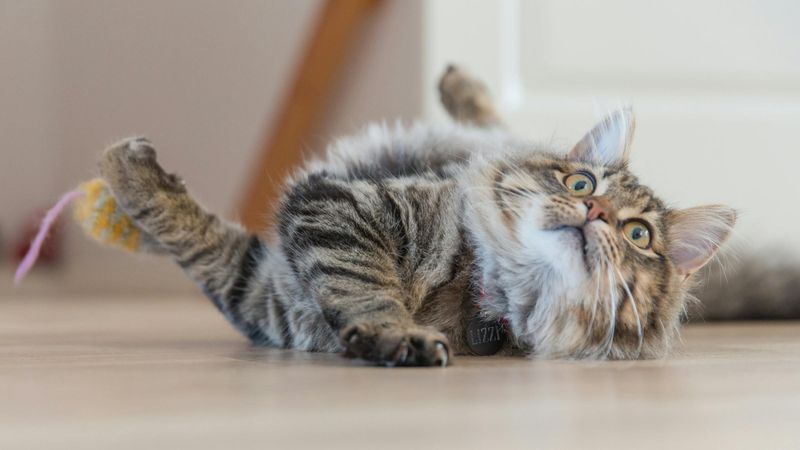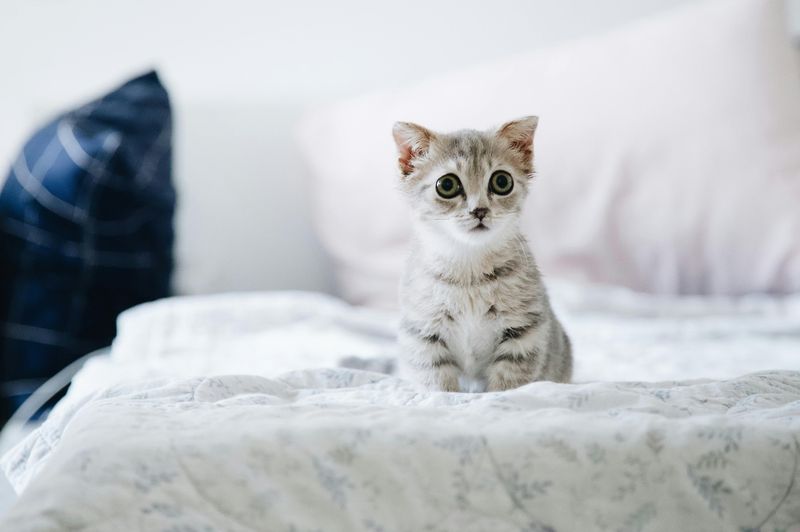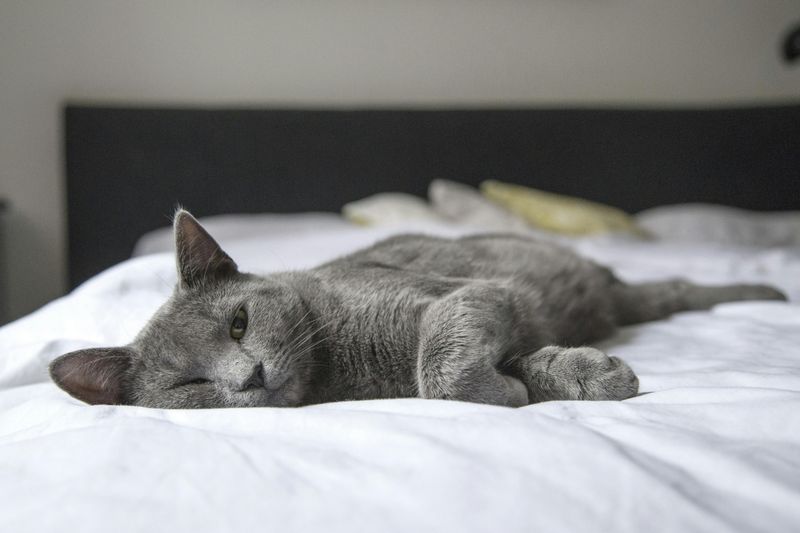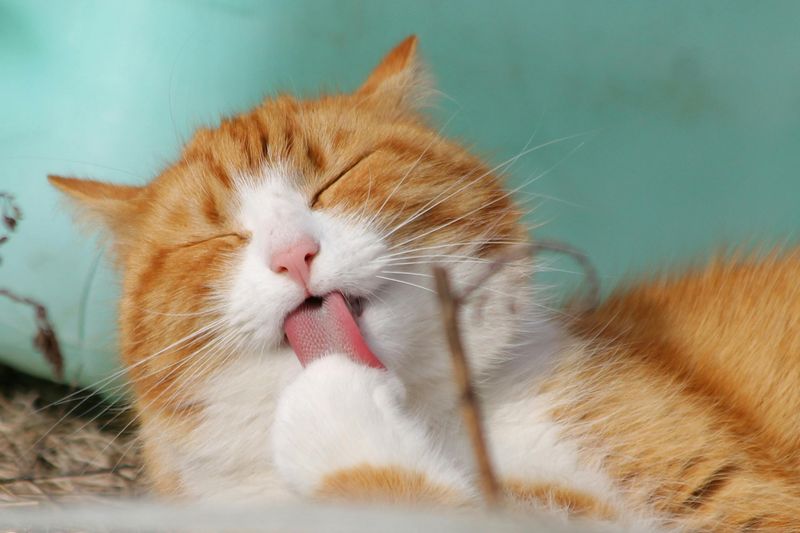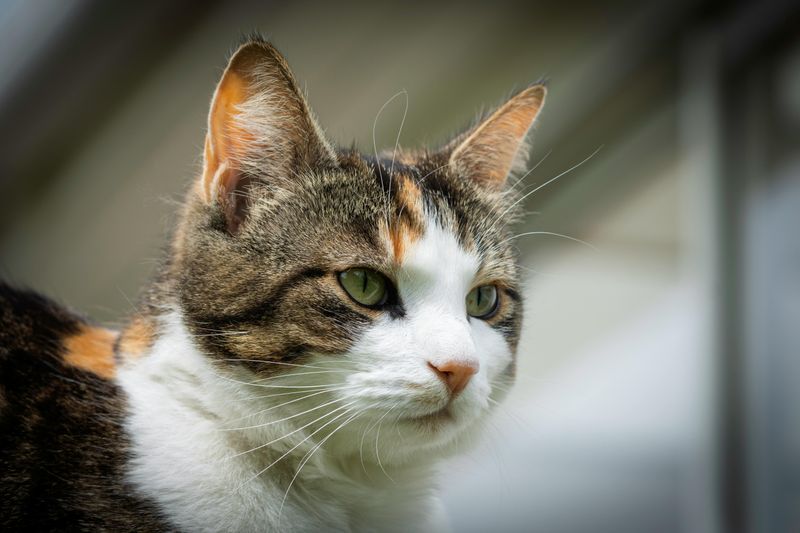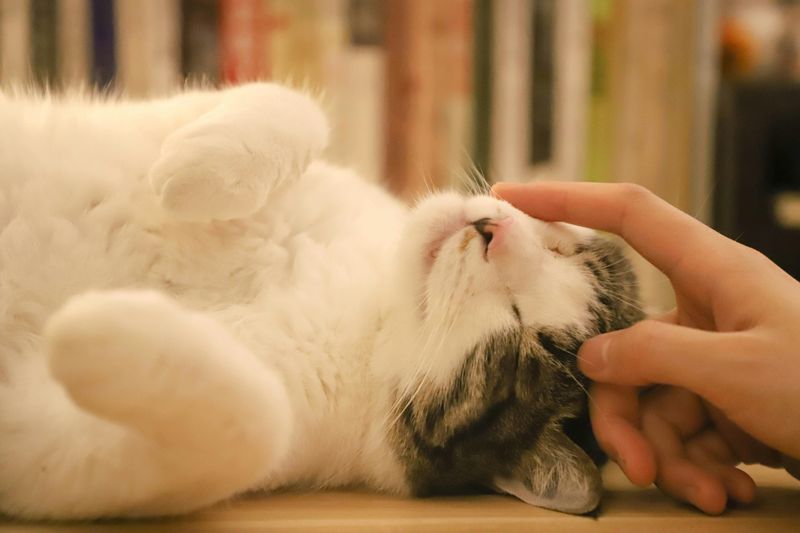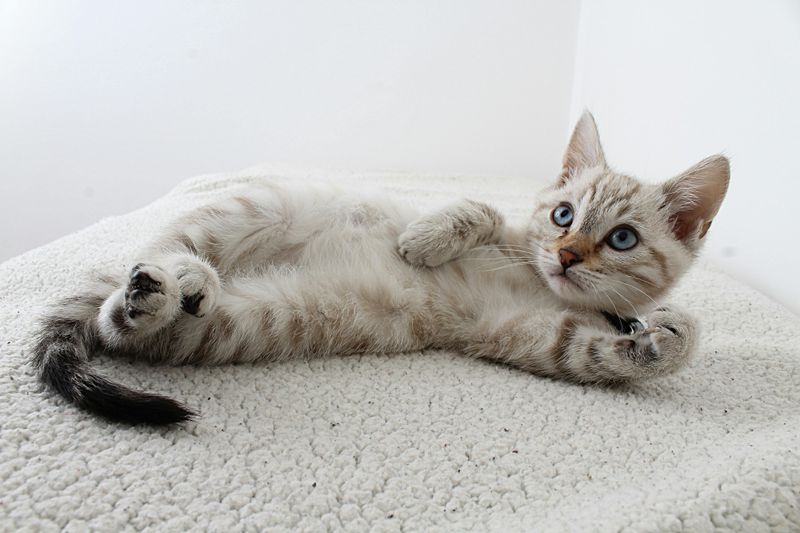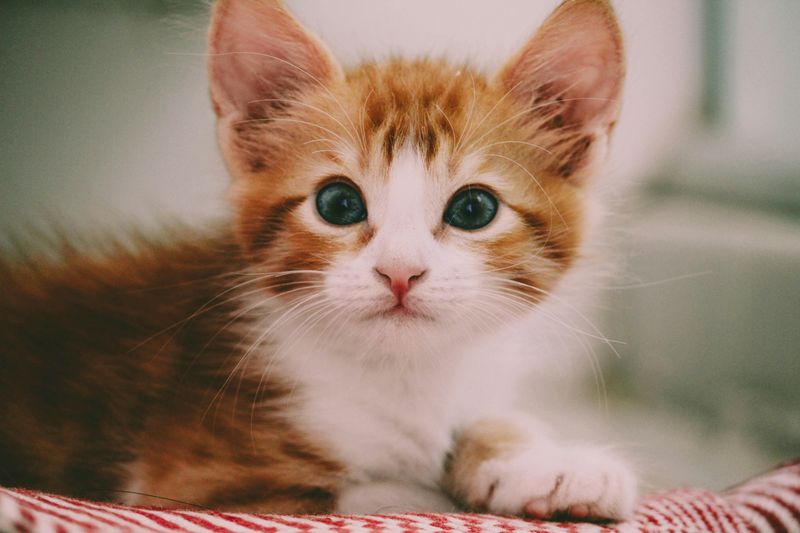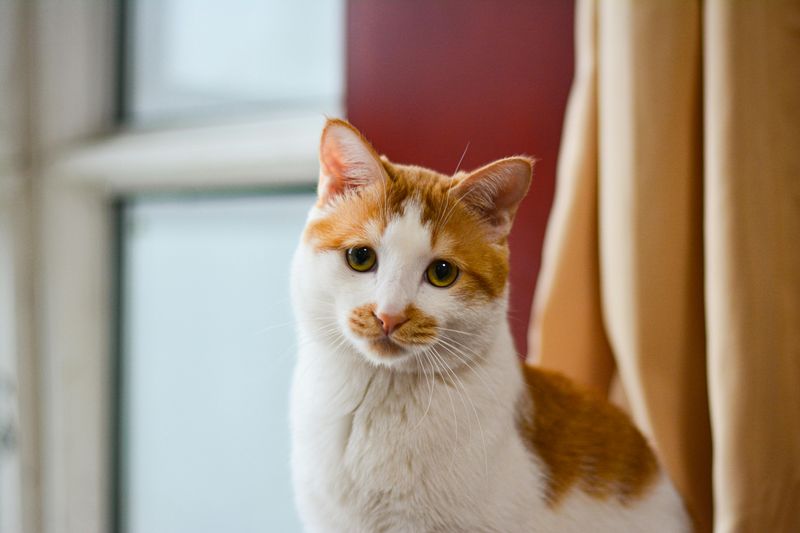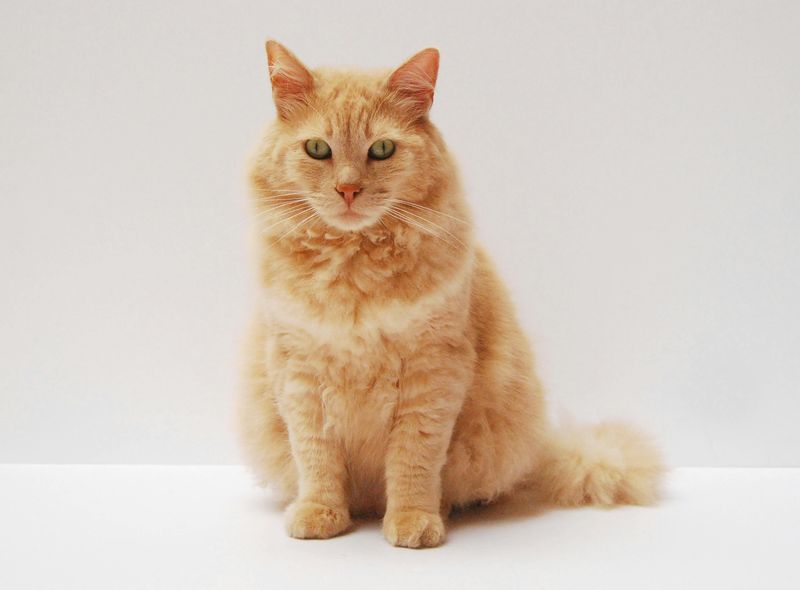📖 Table of Content:
- 1. Understand: Their Own Name
- 2. Understand: Dinner or Food
- 3. Treats
- 4. Understand: No
- 5. Understand: Play
- 6. Understand: Outside
- 7. Understand: Come Here
- 8. Understand: Bedtime
- 9. Understand: Good Kitty
- 10. Sorry
- 11. I Love You
- 12. Be Good
- 13. Stop That
- 14. Clean Up
- 15. Wait a Minute
- 16. Behave Yourself
Cats may pretend they rule the house with zero regard for your chatter, but don’t be fooled by their poker faces and twitching tails. Felines are far more tuned in to human language than they let on. While they won’t sit or roll over on command like their canine cousins, cats definitely recognize certain words—especially the ones that matter most to them (read: food, fun, and their fabulous selves).
But for every word that makes their ears perk up, there’s another that gets totally ignored—or worse, met with a look that screams, “How is that my problem?”
Let’s break down the words your cat actually understands… and the ones they couldn’t care less about.
1. Understand: Their Own Name
Cats absolutely recognize their names when called. Research shows they can distinguish their name from similar-sounding words, even when strangers say it. This recognition develops over time through repeated positive associations.
Your kitty learns that good things happen when they respond to their name – treats appear, petting sessions begin, or mealtime commences. While they might not always come running like dogs, the subtle ear twitch or head turn reveals they heard you perfectly well.
Some cats even come running consistently when called, especially if you’ve reinforced the behavior with rewards throughout their life.
2. Understand: Dinner or Food
Nothing captures a cat’s attention faster than food-related words! Many felines perk up instantly at terms like “dinner,” “food,” or “treats.” The magic happens through classical conditioning – they associate these specific sounds with the appearance of delicious meals.
Watch your cat’s body language when you say these words. Suddenly alert ears, wide eyes, and that special chirping meow all confirm they know exactly what you’re talking about. Some cats even learn to recognize the sound of a can opener or treat bag rustling from across the house.
Smart kitties might even lead you toward their feeding area after hearing these magical words.
3. Treats
The word “treats” might as well be a magical spell for most cats. Their ears perk up, eyes widen, and suddenly they’re right at your feet! This powerful word creates an immediate physical response – your cat’s pupils may dilate and they might start licking their lips in anticipation.
Cats learn this word through consistent positive reinforcement. Every time you say “treats” and follow with actual goodies, you strengthen the neural connection in their brain. The sound pattern becomes firmly linked with imminent pleasure.
Many cats recognize this word regardless of who says it or even the tone used – proof that their selective hearing is actually quite sophisticated!
4. Understand: No
Cats definitely understand “no” – they just don’t always care to obey it! When consistently used in the same situations, cats associate this sharp sound with disapproval of specific behaviors. Your tone matters enormously here; the stern, short sound is what they recognize.
You’ll notice your cat may pause briefly when hearing a firm “no” before deciding whether to continue their mischief. This momentary hesitation proves they understand the meaning, even if they choose to ignore it. Some cats even develop a guilty look when caught mid-wrongdoing.
Effective training pairs the word with immediate redirection to appropriate behaviors rather than just prohibition.
5. Understand: Play
The word “play” triggers immediate excitement in many cats. Their ears swivel forward, pupils dilate, and their body language transforms into hunting mode. This special word signals that fun interaction is about to happen – something most cats eagerly anticipate.
Active cats may dash to retrieve favorite toys or assume the characteristic play position – rear end wiggling, eyes focused, ready to pounce. The connection forms when you consistently pair the word with interactive play sessions involving wand toys, laser pointers, or chase games.
Even older, more dignified cats often can’t resist responding to this invitation with at least a flick of the tail or a curious glance.
6. Understand: Outside
For cats with outdoor access, “outside” becomes a powerful word in their vocabulary. Indoor-outdoor cats quickly learn to associate this sound with the freedom to explore beyond their home territory. Many will immediately run to the door when they hear it.
Even strictly indoor cats often recognize this word if you use it while looking out windows together or during supervised balcony time. Their reaction might include excited chirps, tail vibrations, or intense staring at doors and windows.
The word’s effectiveness varies based on your cat’s personality – some crave outdoor adventures while others prefer watching the world from the safety of a windowsill.
7. Understand: Come Here
Contrary to popular belief, many cats understand the phrase “come here” perfectly well. Whether they choose to respond depends entirely on what’s in it for them! Cats who regularly receive affection, treats, or play after coming when called quickly learn this command.
Watch for subtle acknowledgment signs – a quick glance, ear twitch, or tail movement often indicates they heard you, even if they don’t immediately comply. The most responsive cats are those whose owners have consistently made “coming when called” a positive experience.
Some especially social breeds like Siamese or Abyssinians are more likely to respond reliably to this command than more independent types.
8. Understand: Bedtime
Cats are creatures of routine, making “bedtime” a word many recognize, especially if you have consistent evening habits. Some cats will actually lead the way to the bedroom when they hear this cue, understanding it signals cuddle time and settling down for the night.
The association forms when your nighttime routine happens at similar times with predictable patterns. Cats may respond by jumping on the bed, circling their sleeping spot, or performing their pre-sleep grooming ritual upon hearing the word.
Even cats who sleep elsewhere in the house often understand this signals a quieter phase of the household’s daily rhythm and adjust their behavior accordingly.
9. Understand: Good Kitty
Positive reinforcement phrases like “good kitty” register strongly with cats. They recognize the approving tone and associate these sounds with praise, often responding with happy body language – slow blinks, relaxed whiskers, or a gently raised tail.
Cats learn this phrase means they’ve pleased you, especially when paired with treats, pets, or other rewards. While they don’t understand the literal meaning, they grasp the emotional content behind the words. Many cats will purr or rub against you when praised this way.
The effectiveness increases when you use a high-pitched, warm tone that cats naturally find appealing and non-threatening.
10. Sorry
Cats completely tune out apologies, no matter how sincere you sound. When you say “sorry” after stepping on their tail or being late with dinner, they’re processing your tone and body language, not the word itself. Unlike words connected to food or play, “sorry” offers them no consistent pattern to recognize.
Your cat might respond to your apologetic behavior – the gentle pets, treats, or extra attention that often accompany the word. However, the actual apology means nothing to them. Cats live in the present moment and don’t connect your verbal regret with past actions.
Instead of apologizing, simply resume positive interactions to rebuild trust after accidental upsets.
11. I Love You
Despite our heartfelt delivery, cats remain unmoved by declarations of love. The phrase “I love you” holds no special meaning in feline understanding. Cats respond to your affectionate tone and accompanying physical cues like gentle petting or treats, not the specific words.
Your cat might purr or blink slowly in response, appearing to acknowledge your sentiment. However, this is their reaction to your positive attention rather than comprehension of your words. Cats communicate affection through actions – headbutts, purring, and bringing you “gifts” – not through understanding human love declarations.
Express your love through consistent care, respecting their boundaries, and speaking their language of gentle touch instead.
12. Be Good
The vague instruction to “be good” falls on deaf feline ears. Unlike specific commands like “down” or “no,” this abstract concept lacks clear meaning for cats. They can’t possibly understand what behaviors you’re asking them to perform or avoid with such a broad phrase.
When leaving cats alone with a cheerful “be good,” we’re really just comforting ourselves. Cats live entirely in the moment and make decisions based on immediate desires and opportunities, not remembered instructions. Their behavior while you’re gone depends on their environment and temperament, not your parting words.
Instead of vague commands, focus on providing appropriate enrichment to prevent problematic behaviors.
13. Stop That
The frustrated command “stop that” rarely registers meaningfully with cats. Unlike the sharp, consistent “no,” this phrase varies too much in delivery to form clear associations. Cats thrive on consistency, and this vague instruction doesn’t specify which exact behavior should cease.
Your emotional tone might temporarily interrupt their activity, but without immediate redirection to an appropriate alternative, they’ll likely resume the unwanted behavior. Cats don’t understand complex verbal reasoning or explanations about why their natural behaviors (scratching, climbing, exploring) are problematic in certain contexts.
Effective training replaces general phrases with consistent single-word commands paired with environmental modifications that prevent unwanted behaviors.
14. Clean Up
Phrases like “clean up” or “help me clean” mean absolutely nothing to your feline friend. While dogs might recognize activity patterns associated with cleaning, cats have no concept of tidiness or helping with household chores. Their blank stare when you suggest they assist with cleanup is completely genuine!
Cats actually view your cleaning activities as either threatening (vacuum cleaners) or entertaining (moving objects to pounce on). Your busy cleaning movements might engage their hunting instincts or curiosity, but they have zero comprehension of the purpose behind your actions.
Despite their reputation for cleanliness in personal grooming, cats have no interest in maintaining household order.
15. Wait a Minute
Time-related requests like “wait a minute” are completely lost on cats. They have no concept of measured time or delayed gratification when it comes to their immediate desires. When hungry or wanting attention, your cat lives entirely in the present moment.
Your casual “wait” while finishing a task might as well be meaningless noise to them. Cats judge time through physical cues and routines – sunlight position, hunger levels, or household patterns – not through human verbal time references. This explains their persistent meowing despite your repeated requests for patience.
Rather than expecting understanding, provide distractions like puzzle toys when immediate attention isn’t possible.
16. Behave Yourself
The command to “behave yourself” falls squarely into the category of human language cats simply don’t comprehend. This abstract concept requires understanding social expectations and modifying various behaviors accordingly, far beyond feline cognitive capabilities.
Cats act according to instinct, opportunity, and learned associations, not based on general behavioral standards. When you issue this vague instruction before company arrives, your cat has no framework for interpreting what specific actions you’re requesting or prohibiting.
Instead of expecting comprehension of complex social expectations, create environments where natural cat behaviors won’t conflict with your needs during special situations.
